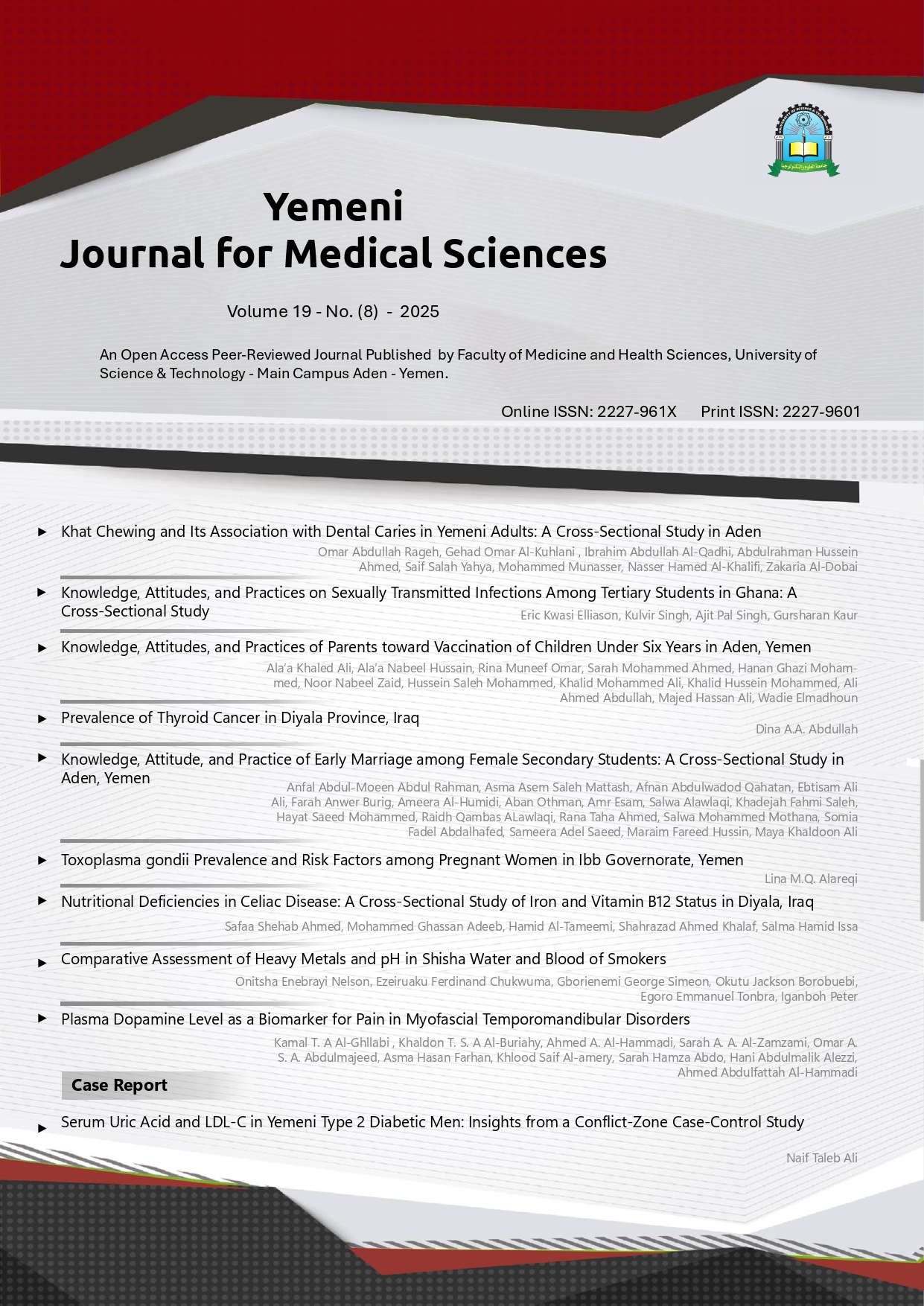Khat Chewing and Its Association with Dental Caries in Yemeni Adults: A Cross-Sectional Study in Aden
##plugins.themes.bootstrap3.article.main##
الملخص
Background: Although chewing khat is a deeply ingrained cultural practice in Yemen, little is known about how it may contribute to tooth caries, despite potential biological explanations.
Objective: This study investigated the association between khat consumption and the prevalence of dental caries in Yemeni adults.
Method: A cross-sectional study included 267 participants from seven Yemeni governorates. Caries prevalence was assessed using the WHO DMFT index. Data on khat use frequency, oral hygiene practices, and sociodemographics were collected via structured interviews. Multivariable logistic regression controlled for confounders (age, smoking, brushing frequency).
Results: A dose-dependent association was observed between regular khat use and caries prevalence (69% vs. 25%, p<0.001), with OR=2.8 (95% CI: 1.9–4.1) for >3 sessions/week. Poor oral hygiene (only 26.2% brushed twice daily) compounded caries risk (OR=2.1, 95% CI:1.2–3.7). Geographic disparities were notable, with caries prevalence highest in Mansoura (69%) and lowest in Brega (54%).
Conclusion: Khat chewing is a dose-dependent risk factor for dental caries in Yemeni adults, exacerbated by poor oral hygiene. Public health initiatives should target high-frequency khat users in high-prevalence areas with preventive and behavioral interventions.
##plugins.themes.bootstrap3.article.details##

هذا العمل مرخص بموجب Creative Commons Attribution 4.0 International License.
تلتزم المجلة اليمنية للعلوم الطبية رخصة مؤسسة المشاع الإبداعي من فئة (CC BY)، والتي تتيح إعادة استخدام البحث بأي شكل من الأشكال شريطة الاستشهاد بالمؤلف (المؤلفين) والمجلة. وتعتبر المجلة أن المؤلف (المؤلفون) موافق على هذه السياسة بمجرد تقديم البحث للنشر.








